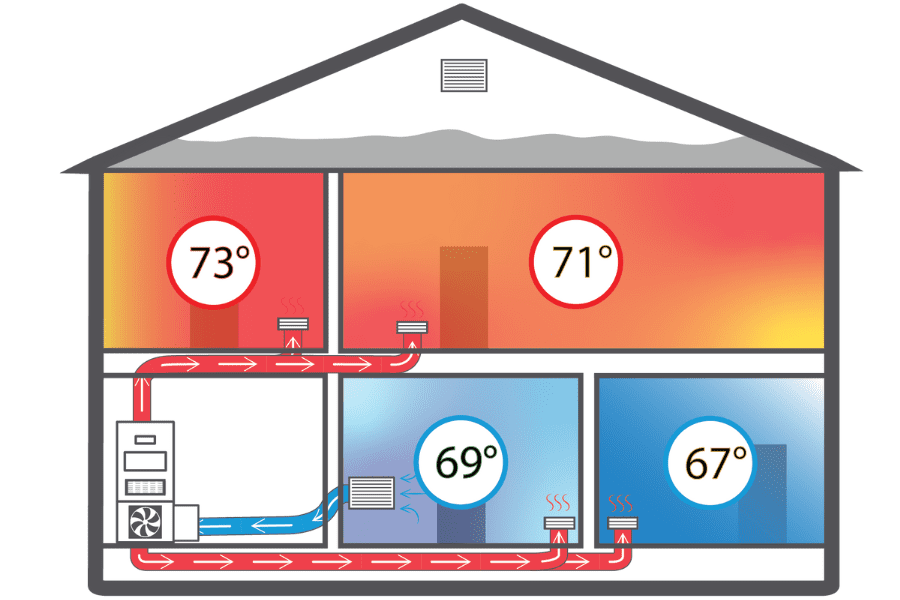Jan 29, 2024
Amping up Solar Adoption: Insights into Human Behavior
Moving people from thought to action can prove extremely difficult even when the benefits of behavioral adoption are made clear and are an obvious improvement to personal, social and environmental systems.
By: Roslynn McCann

Why is it so hard to convince others to change? Moving people from thought to action can prove extremely difficult even when the benefits of behavioral adoption are made clear and are an obvious improvement to personal, social and environmental systems.
We tend to believe that with enough information about the benefits, behavioral change will naturally follow. This approach is known as “information deficit.”1 Sadly, it isn’t overly effective. Neither is the loss-communication approach of the environmental movement with messages like “take shorter showers,” “drive less” or “waste less.” Evolutionarily, humans are loss-averse, as loss equals hardship and scarcity, and we shy away from this type of communication.2, 3
If information alone is insufficient to change behavior and messaging around giving up our current lifestyles doesn’t work, what can be done? It turns out that while humans are complex beings in many ways, there are some consistent tried-and-true techniques that work in motivating engagement in environmental behaviors. Let’s explore some of these techniques, centralized around Community-Based Social Marketing,4 a framework with roots in Social Influence5 and Diffusion of Innovation theories.6
In prompting behavior change, we first need to select our behavior. The process for this concerns identifying the environmental need and the associated behaviors that can address that need. A behavior is then selected with the highest level of impact, penetration (level of adoption among your target audience), and adoption probability.7, 8 For the sake of simplicity, we will choose solar PV adoption as our behavioral goal.
Once we have our behavior and our target audience in mind, we then need to figure out the barriers and benefits of adopting the behavior (using solar PV) and the perceived barriers and benefits of their current behavior from the perspective of our target audience. This information can be gained through observation, literature review, focus groups, individual interviewing, surveying, or any combination of these, depending on your time and resources.
Let’s imagine what some perceived barriers and benefits for solar PV adoption might be for the average homeowner. Barriers might include finding credible providers, experiencing cost uncertainty (quote variations), encountering upfront expenses, facing the uncertainty of available subsidies, dealing with the uncertainty of how solar agreements with power companies work, and choosing between a string inverter and a microinverter. Perceived benefits could include grid independence (self-sufficiency), electrical- and utility-bill offset, and decreased fossil fuel reliance.
For the current behavior, perceived benefits of depending on a fossil fuel-dominated grid might include the comfort and time gained in not having to change anything, the familiarity of how billing works, and the lack of high upfront costs. Perceived barriers could include dependence on the grid, increasing costs of electricity and associated bill increases, and dependence on earth-heating fossil fuels.
Note that completing your barrier-benefit analysis by researching your target audience is extremely important as it could turn out, for example, that they are not at all concerned about fossil fuels but highly concerned about energy independence. In this example, a marketing campaign that focuses on moving beyond fossil fuels might be highly ineffective and a waste of money. The more specific you are about who your target audience is and their unique barriers and benefits, the better.
Once you know your barriers and benefits, the next step is designing a marketing campaign that maximizes both the perceived benefits of the target behavior and the perceived barriers of the current behavior, while minimizing the perceived barriers of the target behavior and benefits of the current behavior. The Community-Based Social Marketing framework outlines strategies or tools that may be employed to do this, including social norms, incentives, prompts, commitment, convenience and communication.

Social norms are extremely powerful and influence the accepted behaviors, values and beliefs of your target audience. Find respected leaders within your target audience who support or have already adopted solar PV and make their support and/or adoption visible.
Incentives include those that are tangible (such as rebates and calculations of potential bill reductions) and those that are intangible (social approval and praise). There is a point of diminishing returns on incentives, so choose incentives that maximize adoption before surpassing a point of diminishing return.
Prompts are helpful to remind your target audience about behavioral engagement. These should be as close in time and space to the target behavior as possible and are often used for behaviors that are repeated (such as bringing bags to the grocery store) as opposed to one-time (installing solar PV).
Commitment creates a sense of accountability. Humans like to be consistent, and if we make a commitment, especially one with witnesses, we are more likely to follow through with our stated intentions. Written commitments tend to be more powerful than verbal ones and both should be voluntary in nature.
Convenience entails making the desired behavior as easy and accessible as you can. This includes reducing barriers and simplifying processes involved in adopting the target behavior. Effective communication (crafting persuasive messages, choosing the right channels such as social media, holding community presentations, etc.) is also an essential part of a successful marketing campaign.
Humans are complex beings and require additional considerations to increase the likelihood of behavioral adoption, despite the temptation for us to assume that providing facts about the benefits of solar PV adoption will effectively prompt change. As you work to convince others to adopt solar PV, hopefully Community-Based Social Marketing9, 10 will help you increase your level of success!
Sources
- https://tinyurl.com/Suldovsky
- https://tinyurl.com/SchneiderSang
- https://tinyurl.com/KahnTversky
- McKenzie-Mohr, D. (2011). Fostering sustainable behavior: An introduction to community-based social marketing. New Society Publishers.
- https://tinyurl.com/CialdiniGold
- Rogers, E.M. (1962). Diffusion of Innovations. Free Press of Glencoe.
- https://tinyurl.com/CBSMPrimer
- McKenzie-Mohr, D. (2011). Fostering sustainable behavior: An introduction to community-based social marketing. New Society Publishers.
- Ibid.
- https://tinyurl.com/CBSMPrimer
This article was originally published in Solar Today magazine and is republished with permission.





